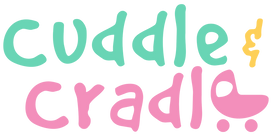To buy baby clothes, might be one of the most exciting and difficult things to do when you're getting ready to have a child. There are several alternatives available, ranging from small socks to gorgeous onesies. But it's important to remember these clothes' usefulness in between all the charm. Since newborns develop at an incredible rate, you want to make sure the clothing you choose today will be practical, comfortable, and at least somewhat long-lasting. When purchasing baby clothing, these are some crucial pointers to assist you sort through the sizes and designs.
Understanding Baby Clothing Sizes
Because they frequently differ between brands and are mostly determined on the infant's weight and height rather than age, baby clothes sizes can be difficult to understand. Baby clothing is typically divided into age groups, such as newborn (NB), 0–3 months, 3–6 months, etc. But these are only general recommendations. Always refer to the brand's unique sizing guide for a more exact fit.
Tip 1: Know Your Baby's Current Measurements
It's useful to know your baby's current weight and length before you buy them clothing. Regularly monitoring these measures can help you select clothes that fit properly and may also show you how fast your child is developing.
Tip 2: Shop According to Growth Trends
In their first year of life, babies develop the fastest. Babies typically acquire 5 to 7 ounces in weight every week for the first six months of their lives, and they typically develop 1 to 1.5 inches in length each month. Consider purchasing clothing that is one size larger while keeping in mind these growth tendencies. This method makes it more likely that clothing will last longer than a month.
Choosing the Right Clothes
There is an abundance of fabrics, styles, and patterns to choose from when purchasing baby apparel. Here's how to choose things that blend style, utility, and comfort.
Tip 3: Opt for Soft and Safe Materials
Whenever possible, use clothing made of breathable, soft fabrics like cotton. Because of their extremely delicate skin, babies might get rashes from abrasive materials. Because organic cotton doesn't contain any harsh chemicals, it's a great option.
Tip 4: Consider Ease of Use
Seek out baby clothing with easy-to-dress qualities. Clothes with zippers, snaps, or large neck holes can assist prevent discomfort for the infant and save time. Additionally, clothing with adjustable waistbands or cuffs will fit your infant better and last longer.
Tip 5: Layering is Key
In addition to being necessary for your baby's warmth and comfort, layering gives them flexibility in adapting to changing temperatures. Start with a basic onesie and, depending on the weather, add layers like sweaters or sleep sacks suitable for babies.
Practical Tips for Buying Baby Clothes
Tip 6: Buy in Phases
Fight the need to shop for a whole new outfit before the baby is even born. Rather, get a few basic items and then expand your selection as your child develops and your understanding of their demands and growth trajectory deepens.
Tip 7: Keep Seasons in Mind
Think about the season your baby will be in when they reach particular sizes. If your kid will reach that size in the height of summer, it might not make sense to purchase a bulky winter clothing in a 6-month-old size.
Tip 8: Read Reviews
Read reviews to make sure clothing is comfortable, long-lasting, and true to fit before making a purchase, especially if you're buying online. Making educated decisions can greatly benefit from the experiences of other parents.
Tip 9: Look for Sales and Quality Second-Hand Clothes
Before they are outgrown, baby garments are frequently only worn for a few months. Purchasing gently worn or on sale clothing from reputable brands can help you save money.
Tip 10: Consider the Resale Value
It's worth it to resell some infant clothing brands and styles. If you purchase high-quality clothing, you might be able to sell it when your child outgrows it and recover part of your costs.
Tip 11: Use Colours and Patterns with High Contrast
High contrast designs tend to draw in newborns and can be very fascinating. Selecting these designs may be enjoyable and useful at the same time.
Tip 12: Do Your Clothes First
Before putting on new clothing, wash it for your infant to get rid of any manufacturing residues that can irritate their skin.
Tip 13: Examine Online Reviews
Examine internet reviews to find out whether clothing often fits true to size and how well it holds up after washing.
Tip 14: Purchase Used
Think about purchasing high-quality used baby clothing from internet marketplaces or consignment stores. Since babies grow out of their garments quickly, many are hardly worn at all.
Tip 15: Consider Resale
The resale value of the baby clothing you purchase should be considered. Brands with good post-wear condition retention are simpler to resell.
You can make sure that the baby clothing you purchase are not only attractive but also functional, cosy, and appropriate for your baby's developing requirements by implementing these suggestions into your regular shopping practice.
Final Verdict
To buy baby clothes, it's important to strike a balance between comfort, usefulness, and cuteness. Recall that the ideal baby wardrobe is one that is easy to maintain, grows with your child as they do, and is pleasant for them to wear. These pointers can help you make informed decisions while purchasing baby clothing, so your child is happy, comfortable, and stylish. Use these shopping ideas to find baby clothing that fit properly and to enhance the effectiveness and fun of your buying trip.
By following these recommendations, you'll be able to enjoy the process of choosing an appealing yet practical clothing for your child in addition to keeping up with their rapid growth. Cheers to your shopping!









